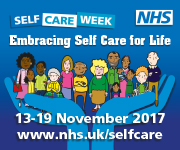 It is well documented, and evidence suggests that regular activity and exercise reduces the likelihood and incidences of many chronic conditions. Not only that, but there are a wide variety of health benefits from regular exercises and physical activity – even if you don’t lose weight.
It is well documented, and evidence suggests that regular activity and exercise reduces the likelihood and incidences of many chronic conditions. Not only that, but there are a wide variety of health benefits from regular exercises and physical activity – even if you don’t lose weight.
Sport England provided an “Active Lives Survey” in 2015/16 which found 26% of adults were classed as inactive. This means their physical activity levels are less than 30 minutes per week. Just 61% of adults were classed as active which is a recommended 150 minutes of physical activity or more. The remaining 13% were classed as fairly active. Organisation for Economic Co-operation and Development (OECD) recently reported that the UK is now the most overweight country in Western Europe.
It is suggested that obesity can lead to a higher risk of chronic illnesses, mainly hypertension, cholesterol, diabetes and cardiovascular diseases. This reinforces the fact that the best way to avoid chronic injury or illness is to increase our physical activity levels to the recommended 150 minutes or more per week.
At the other end of the spectrum, within sport there is always a possibility for injury. Injuries all occur in different ways and how we treat them varies for each person. Some injuries, like traumatic injuries, can be uncontrollable and unavoidable. For example, a footballer may be on the receiving end of a badly timed tackle, resulting in a broken leg, a serious injury, which could not have avoided. Other injuries, like overuse injuries, are sometimes avoidable and with the right exercises, the risk of causing them could be reduced.
Quality over Quantity
When exercising, it is important to ensure you have a good quality of performance rather than a large quantity of exercise which is poorly performed. By quality of performance, we are looking for the correct technique and form when performing different activities, as well as allowing time for adequate recovery. This will ensure you are consistently working at the optimal level will significantly reduce the risk of injury.
With incorrect technique and form, we increase the risk of injury as we load the wrong structures and areas. For example, when doing a squat, make sure your knees do not drift inwards as this will excessively load the medial aspect of the knee.
Rest and Recovery
Without rest and recovery, the muscles become fatigued and overworked which increases the injury risk and over time leads to performance dips. Therefore, it is vitally important to have rest days during the week. If you do not allow your body time to recover and rest, the muscles cannot efficiently operate, and this leads to overloading the joints.
Rest and Recovery also refers to knowing your limits. Whether you’re a beginner or a professional athlete, we can all just simply do too much over time or too much, too soon. A common training error in most sports is trying to progress too soon and too fast. This leads to corners being cut and the body will struggle to cope with it. It is much better and safer to gradually increase your training load to avoid the risk of injury.
Sports Massage
As we exercise our muscles work harder, they become ‘tighter’ and have increased tension throughout, leading to muscular imbalances. This tension build-up can lead to stresses on a variety of structures, like the joints and connective tissue.
It is recommended that you receive regular sports massage to decrease this tension build-up and restore the balance of the muscles. In time, this will help decrease the chances of chronic issues developing and leading to more serious conditions – which lead to a longer rehabilitation process! This works in a similar way as your car. To keep your car running smoothly, you maintain it with regular services, MOTs and so on. The same theory applies to your body.
Muscle Weakness and Imbalance
Some injuries can be caused by ‘weak’ muscles or ‘inhibited’ muscles. Therefore, when you increase your training effort, you may begin to get injuries that you would not usually get before. This is because your body can’t cope with the demands of what you are trying to do. To avoid this, it is recommended that you see a physiotherapist who can fully assess the areas and identify the root cause of the issue. There are often simple exercises that will alleviate your symptoms and put you back on track.
A common example of this is in runners. Often the gluteal muscles do not activate in the correct order and the hamstrings and lower back compensate for this. Over time, this can lead to knee, foot and/or ankle injuries. To correct this, your therapist will be able to advise you on exercises to do, which may be as simple as glute activation and strengthening work.
Injury Prevention – Listen to your Body
On a final note and, arguably, most important is to Injury Prevention – Listen to your Body. If you have pain somewhere, it is your body’s way of telling you something is wrong. As with most things in life, it is best to get this sorted sooner, rather than later. If you do have pain, get it assessed as soon as possible to avoid the issue becoming something more sinister and chronic – which could lead to a long rehabilitation to return to your fully fit state!

